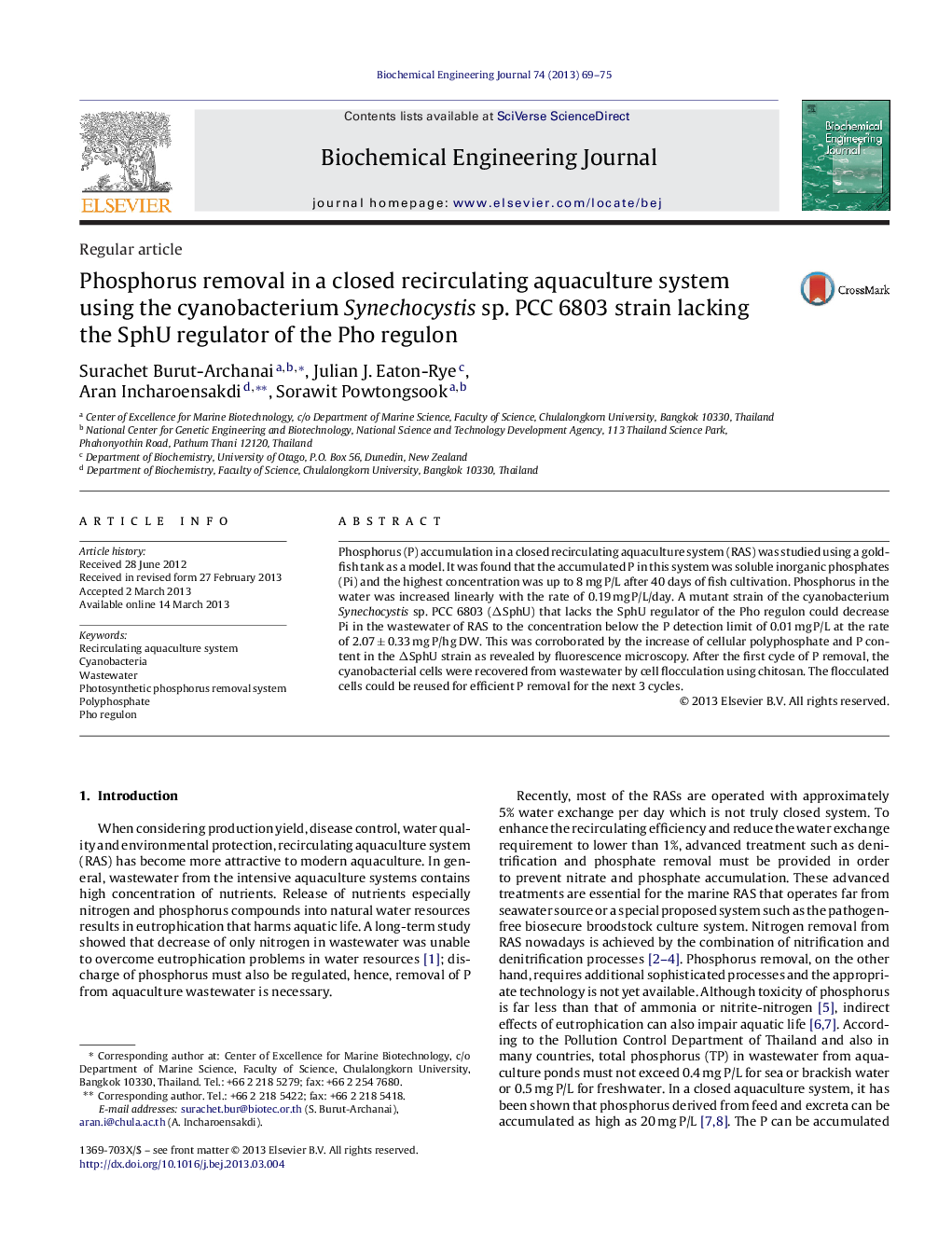| Article ID | Journal | Published Year | Pages | File Type |
|---|---|---|---|---|
| 3403 | Biochemical Engineering Journal | 2013 | 7 Pages |
•A mutagenized Synechocystis sp. PCC 6803 strain ΔSphU was studied for P removal.•The ΔSphU strain could remove P in wastewater from RAS below 0.01 mg P/L.•The cells were separated from treated water using chitosan flocculation.•The flocculated cells were able to be reused for P removal repeatedly.•The phosphorus in RAS was increased linearly with the rate of 0.19 mg P/L/day.
Phosphorus (P) accumulation in a closed recirculating aquaculture system (RAS) was studied using a goldfish tank as a model. It was found that the accumulated P in this system was soluble inorganic phosphates (Pi) and the highest concentration was up to 8 mg P/L after 40 days of fish cultivation. Phosphorus in the water was increased linearly with the rate of 0.19 mg P/L/day. A mutant strain of the cyanobacterium Synechocystis sp. PCC 6803 (ΔSphU) that lacks the SphU regulator of the Pho regulon could decrease Pi in the wastewater of RAS to the concentration below the P detection limit of 0.01 mg P/L at the rate of 2.07 ± 0.33 mg P/h g DW. This was corroborated by the increase of cellular polyphosphate and P content in the ΔSphU strain as revealed by fluorescence microscopy. After the first cycle of P removal, the cyanobacterial cells were recovered from wastewater by cell flocculation using chitosan. The flocculated cells could be reused for efficient P removal for the next 3 cycles.
